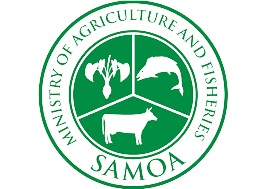MAF – Ministry of Agriculture & Fisheries
- Level 4 TATTE Building, Sogi, Apia, Samoa
- (685) 22561, 22562
- info@maf.gov.ws
WELCOME TO CEO OFFICE
“It is a tool that reflects on the global state of the art in communication efficiency and effectiveness. In this regard, welcome to what the Ministry can offer”
BRIEF STATEMENT
This is the first website for the Ministry. It is a tool that reflects on the global state of the art in communication efficiency and effectiveness. In this regard, welcome to what the Ministry can offer.
The driving emphasis is for information such as pool of farming technologies, commodity export and import pathways, and disinfestation treatments to be accessible to the farming community, traders etc. A brief statement on current status of development is as follows:
- The performance of the agricultural sector is a concern according to Samoa’s recent economic update. Agriculture’s contribution to Gross Domestic Product (GDP) dropped from 12% in 1998 to 8% in 2003, averaging at 7% during 2004 to 2007. This declining trend may be attributed to a number of factors
- There are currently more attractive income generating opportunities in other sectors such as tourism, resulting in a much faster growth rate. The increasing purchasing power of rural households from remittances also relates directly to reduced dependency on traditional farming earnings. In recent years, there has been a drift of youth to urban centers, resulting in a labour shortage in rural areas. Geographical isolation results in a narrow genetic and production base with limited opportunities to develop economies of scale in production. Increased regional and global trade and travel has increased the risk of introducing unwanted plant and animal pests, threatening the fragile agriculture and fishery resource base and ecosystems.
Climate change and food insecurity exacerbate these challenges. Climate associated disasters such as tropical cyclones, flash floods and droughts impose serious constraints on development; to the extend that farmers seem to be in a constant mode of recovery.
A collapse in valuable taro industry following the introduction of taro leaf blight in the mid 1990s serves to illustrate the vulnerability issue under such threats.
It sees obvious that food availability and people’s accessibility to food are amongst the first to be affected following such disasters. Whilst that may be the case, agriculture and fisheries continue to play a vital role in regards to food security and alternative sources of income.
- There must be a balance in the use of limited natural resources for commercial development with the need to maintain vital ecosystem services for the agriculture and fisheries sectors. This balance must also be considered between food security and bio-fuel in light of high fossil fuel prices in the international market,
The environmental stresses that are already plaguing the farming community need to be managed. As such, the farmers must be more resilient through the adoption of adaptable farming practices,
It is prime time to urgently develop traditional food sources to supplement or substitute for imported food. Import substitution, value adding, improved local and export trade represent avenues to recapture farming as an income generating opportunity. Hence, farming as a business offers the potential for self employment, to make good use of the available land and human resources. There is abundant unused land, and the unemployed level is currently estimated at 23,000 plus 1500 school leavers every year.
